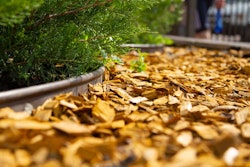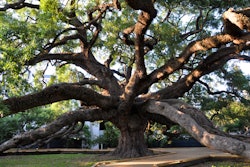What they lack in size, they more than make up for in versatility and beauty. An ornamental tree will find its way to the focus of your landscape, so as you design, keep these show-stealers in mind.
From a technical standpoint, ornamental trees are classified as those trees that stand less than 25 feet high, and are usually distinguished by characteristics deserving of the name ornamental, be it their blooms, foliage, bark, or even their form. Many of the trees in this category also bear fruit, although some varieties are fruitless – an important consideration if your client doesn’t want the mess associated with falling fruit. So be sure to select the variety that meets your requirements.
In addition to the texture and color interest ornamental trees offer the landscape, they also allow you to design while keeping the landscaping to scale, especially as it pertains to the house and other surroundings. There are times when even a large shrub ornamental is too small, but a standard tree is too large. Ornamental trees can prove to be the missing link that ties everything together.
There are a considerable number of ornamental trees to choose from. But your cultural and aesthetic requirements will help you narrow the list. Here is a short list to help get you started (note that each tree listed has numerous varieties). Remember, no matter how appealing the tree’s features, you must first base your selections on hardiness in your region, growing conditions and mature size of the tree.









